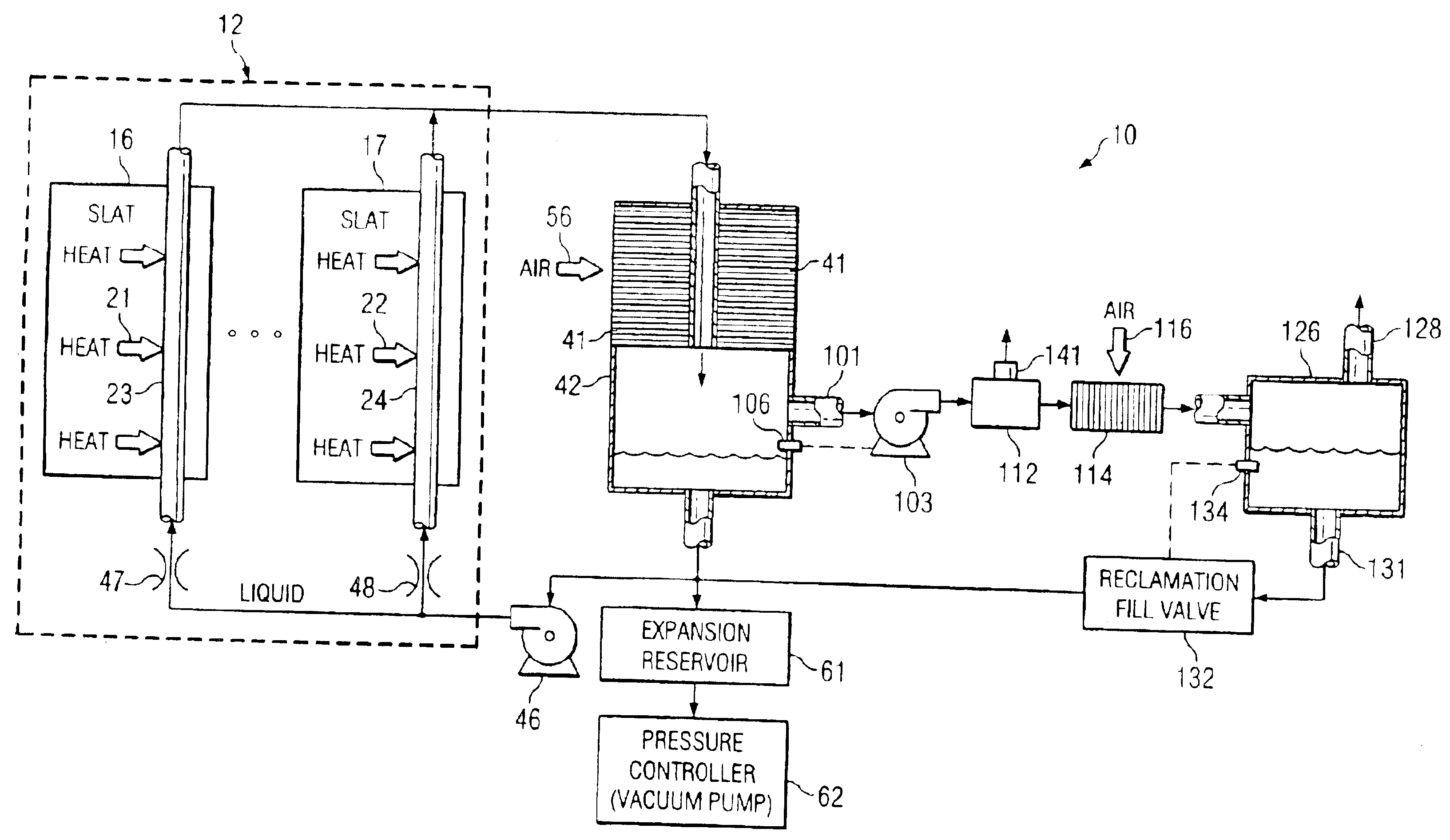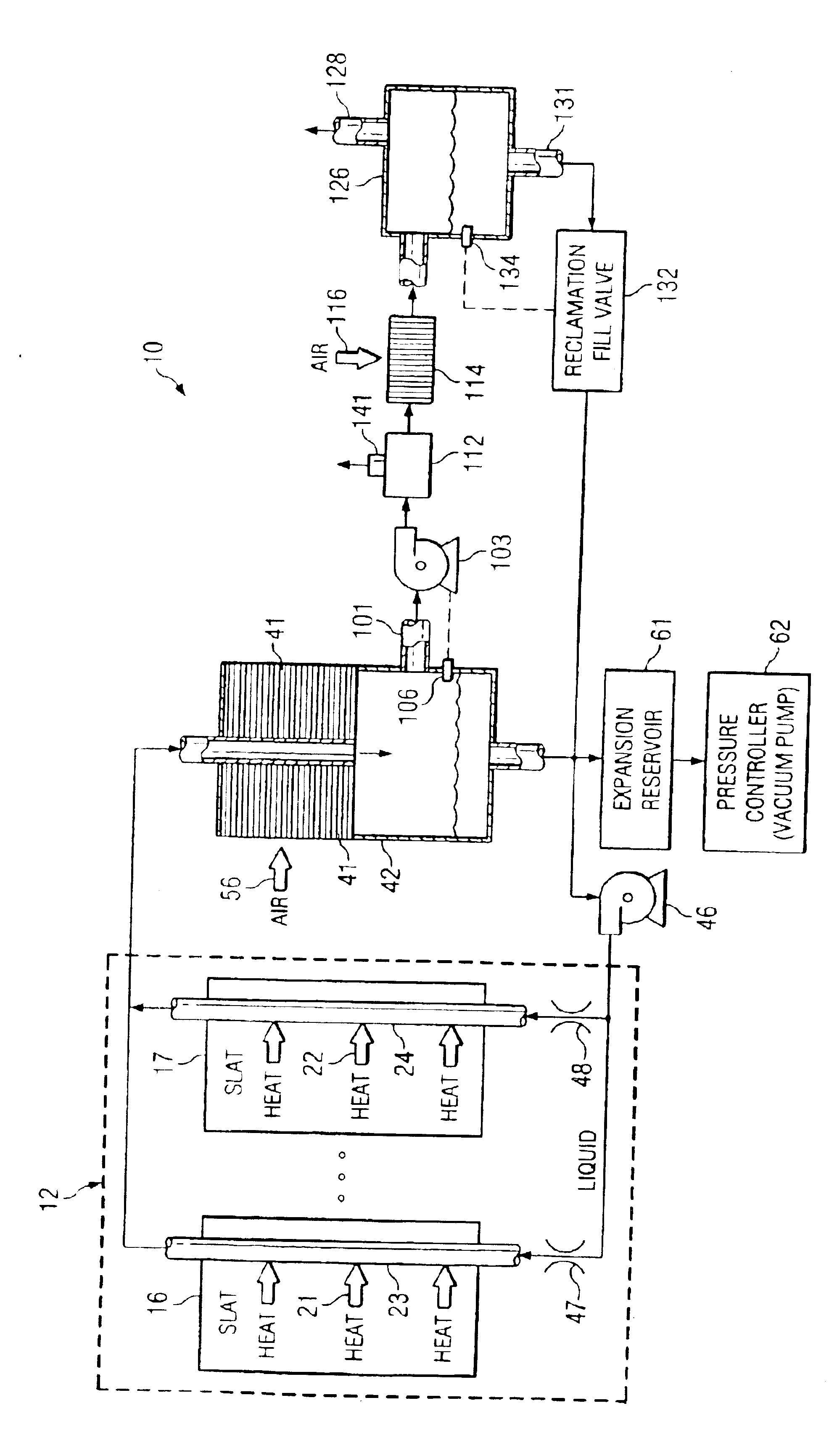Method and apparatus for extracting non-condensable gases in a cooling system
- Summary
- Abstract
- Description
- Claims
- Application Information
AI Technical Summary
Benefits of technology
Problems solved by technology
Method used
Image
Examples
Embodiment Construction
[0006]The drawing is a block diagram of an apparatus 10 which includes a phased array antenna system 12. The antenna system 12 includes a plurality of identical modular parts that are commonly known as slats, two of which are depicted at 16 and 17. A feature of the present invention involves techniques for cooling the slats 16 and 17, so as to remove heat generated by electronic circuitry therein.
[0007]The electronic circuitry within the antenna system 12 has a known configuration, and is therefore not illustrated and described here in detail. Instead, the circuitry is described only briefly here, to an extent which facilitates an understanding of the present invention. In particular, the antenna system 12 includes a two-dimensional array of not-illustrated antenna elements, each column of the antenna elements being provided on a respective one of the slats, including the slats 16 and 17. Each slat includes separate and not-illustrated transmit / receive circuitry for each antenna ele...
PUM
 Login to View More
Login to View More Abstract
Description
Claims
Application Information
 Login to View More
Login to View More - R&D
- Intellectual Property
- Life Sciences
- Materials
- Tech Scout
- Unparalleled Data Quality
- Higher Quality Content
- 60% Fewer Hallucinations
Browse by: Latest US Patents, China's latest patents, Technical Efficacy Thesaurus, Application Domain, Technology Topic, Popular Technical Reports.
© 2025 PatSnap. All rights reserved.Legal|Privacy policy|Modern Slavery Act Transparency Statement|Sitemap|About US| Contact US: help@patsnap.com


